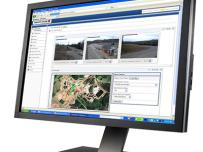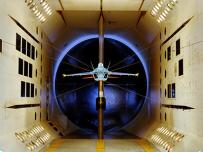
What if we showed you how we’re creating the foundation for real-world asset management that’s reliable, adaptable, sustainable and resilient? Discover trends and what our subject matter experts will share at the 34th International Maintenance Conference (IMC) in Marco Island, Florida.
Operating. Maintaining. Ensuring Reliability and Performance.
Just a handful of the challenges facing the asset management and reliability community responsible for managing organizational assets. And with increased pressures and shrinking budgets, focusing on reliable, adaptable, safe and sustainable lifecycle solutions is made even more challenging.
One approach to reducing costs? Using technology as an enabler.

The digital and technology-dominated world provides us with a prime environment to connect solutions into an integrated management system. Edge computing and artificial intelligence can quickly gather data using sensors to monitor assets in real-time. Then, specialists assess the asset’s health using this data and their experience and subject matter expertise (SME) to make smart, risk-based and science-based decisions.
By leveraging both the data and experience, organizations can make more tactical and strategic decisions, helping to curb costly potential or pending failure impacts. These smart decisions also prepare organizations for unforeseen events, including weather – a crucial consideration when it comes to minimizing potential effects on assets and communities and making them more resilient.

Working with our clients, we partner to develop strategic approaches to control costs, increase efficiency and mitigate risk. Take for example NASA’s Langley Research Center, where we’re using intelligent asset management technologies to optimize operations and increase the life of assets, many of which have passed their original design life.
With an award-winning condition-based maintenance approach, Jacobs and NASA are improving system reliability and optimizing Total Cost of Ownership (TCO) on 270 facilities at the Langley Research Center. With 116,000 asset data acquisition points across the facilities, we’ve helped achieve more than $12 million in savings for NASA, without a corresponding reduction in service levels.
“A condition-based maintenance (CBM) approach emphasizes holistic integration of solutions that span across the full facility lifecycle to manage the challenges of operational and maintenance programs while generating greater value in terms of time and cost savings,” explains Jacobs Critical Mission Solutions Senior Vice President Steve Arnette. “At Jacobs, our CBM approach increases our customer’s savings by providing preventive maintenance that identifies potential system failures before they occur, resulting in reduced maintenance action and costs. Planned maintenance and identification of potential catastrophic equipment failures also prevent risks to business partners, clients and staff.”
Want to hear more? Don’t miss us at the International Maintenance Conference, where Jacobs’ Marie Getsug, Program Manager and Ramesh Gulati, Reliability Sherpa will present on “Applying Design for Reliability (DfR) to a Multi-Billion Dollar Capital Portfolio.” Together, they represent the full spectrum of our Mission Critical and People and Places Solutions offerings.
When a client’s global capital project portfolio investment significantly increased due to the demand and success of their products, Design for Reliability (DfR) is identified as a strategic approach to optimize the TCO and ensure a reliable and sustainable product supply.
Our speakers will share how to align DfR with the corporate vision, mission and core values by establishing a Declaration, preparing DfR Charters for specific capital projects, and developing the corporate DfR framework and toolkit. This ensures momentum and commitments gained during the DfR workshop continue to be a priority and the expected value, cultural influence, reliability and performance results are realized.
Companies with a capital portfolio who aspire to improve delivery of their capital projects with respect to the TCO performance, reliability, culture, integration of Industry 4.0 technologies, tools, and techniques, as well as those who want to avoid strategic blunders which may have gone undiscovered until it was too late with previous capital projects can apply this DfR, regardless of the industry.
Stakeholders with an interest in the overall execution of capital projects, seeking a vertical startup and smooth transition from CapEx to OpEx (TOTEX), will find this presentation valuable. Honoring the perspectives of each and every stakeholder is key to realizing the SME of each of the functions within an organization. This is valuable information for all levels of the organization, from executive decision making to engineering, operations, and maintenance staff who design, operate and maintain the assets.
The full list of Jacobs’ IMC presentations includes:
- Jacobs’ John Fortin: Making the Case for Your Capital Project through Business Case Evaluation
- Jacobs’ John Fortin and Clinton Davis, Gwinnett County Department of Water Resources: The Journey to Excellence: Asset Management Gap Assessments
- Jacobs’ Marie Getsug and Ramesh Gulati: Applying DfR to a Multi-Billion Dollar Capital Portfolio
- Jacobs’Marie Getsug and Ramesh Gulati: Apply DfR to Your Capital Project Process to Catalyze Optimum TCO, Performance and Reliability
- Jacobs’ Marie Getsug: An Improvisation of WIRAM Stories Prompted by Participant Provided Topics: Unprepared and Unfiltered
- Jacobs’ JD Solomon: How to Get Your Boss to Understand
- Jacobs’ Thomas Northcott: Is Your Electrical Maintenance Program a Safe Program
- Jacobs’ John Ganaway: Vibration Analysis Program Assessment: The Good, The Bad, and The Ugly…Lessons Learned
- Jacobs’ Doug Cook and Aidan Kalloo: Applying Project Management Discipline to an Asset Management Transformation Program
For more information on our presentations, click here. Not attending and want to discuss your project? Email John.Fortin@jacobs.com.












































